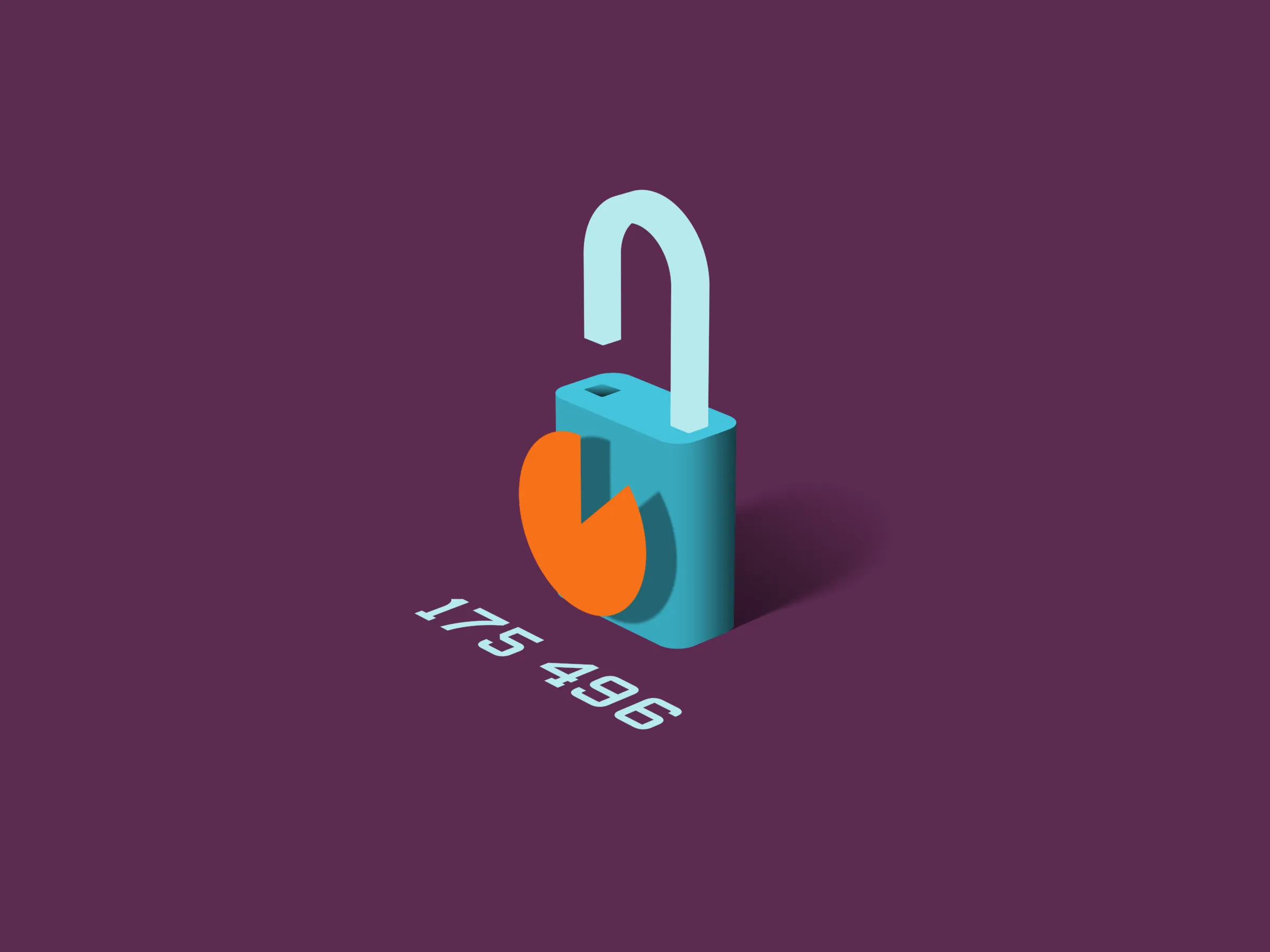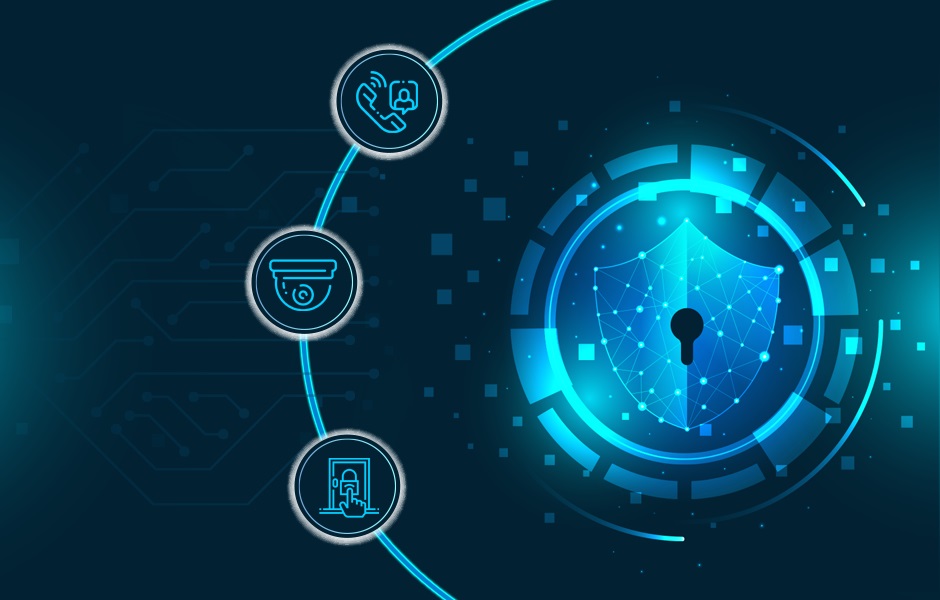Contents
- 1 The Importance of Encryption and Two-Factor Authentication for Online Security
- 2 Overview of What This Article Will Cover
- 3 Encryption: What It Is and How It Works
- 4 Two-Factor Authentication: Adding an Extra Layer of Security
- 5 Benefits and Drawbacks to Using Encryption and Two-Factor Authentication
- 6 Tips for Implementing Encryption and Two-Factor Authentication
- 7 Conclusion
The Importance of Encryption and Two-Factor Authentication for Online Security
In today’s digital world, keeping sensitive information safe online is more important than ever. With cybercrime on the rise, it’s crucial to take extra precautions to protect your personal data.
This is where encryption and two-factor authentication come in. Encryption is the process of encoding information so that only authorized parties can access it.
It’s used to secure data in transit, such as emails, online transactions, and instant messaging conversations. Without encryption, anyone with access to the network could easily intercept and read your private messages.
Two-factor authentication (also known as 2FA) adds an extra layer of security by requiring users to provide two forms of identification before accessing their accounts. This means that even if someone has your username and password, they still won’t be able to get into your account without the second factor.
Overview of What This Article Will Cover
In this article, we’ll discuss everything you need to know about using encryption and two-factor authentication for extra security. We’ll start by explaining what encryption is and how it works.
We’ll also cover different types of encryption tools you can use to protect your data. Next, we’ll dive into two-factor authentication and why it’s an essential part of online security measures today.
We’ll explore different 2FA options available (such as SMS codes or biometric verification) and recommend popular 2FA tools worth trying out. We’ll also discuss the benefits of using both encryption and two-factor authentication together (such as increased protection against hacking attempts), along with potential drawbacks (such as inconvenience or risk if backup options aren’t set up properly).
We’ll provide some tips on how you can implement these measures effectively yourself. By the end of this article, you’ll have a better understanding of how encryption and two-factor authentication work together to provide an extra layer of security for your online activities.
Encryption: What It Is and How It Works
When it comes to online security, encryption is one of the most important tools available. Encryption works by taking your data (such as a message or a file) and scrambling it so that it can only be read by someone who has the “key” to unscramble it.
This makes it much harder for hackers or other malicious actors to intercept your data and read it without your permission. There are two main types of encryption: symmetric and asymmetric.
Symmetric encryption uses a single key to both encrypt and decrypt data, while asymmetric encryption uses two keys (a public key and a private key) to encrypt and decrypt data. The use of two keys makes asymmetric encryption more secure than symmetric encryption, but also more complex.
One example of a popular symmetric encryption tool is BitLocker, which is included with many versions of Windows. BitLocker allows you to encrypt entire drives on your computer so that all the files stored on them are protected.
Another option for encrypting files on your computer is VeraCrypt, which is an open-source tool that can be used on multiple operating systems. While both BitLocker and VeraCrypt are great options for encrypting local files on your computer, there are also plenty of online tools available for encrypting messages or other sensitive information.
Some examples include Signal (which includes end-to-end encryption for text messages) and ProtonMail (which offers encrypted email services). Ultimately, no matter what kind of data you’re looking to protect, there’s likely an encryption tool out there that can help you keep it safe from prying eyes – but make sure you choose a reputable tool with a history of strong security practices in order to get the best protection possible!
Two-Factor Authentication: Adding an Extra Layer of Security
In today’s world, where the internet is an integral part of our lives, it’s not enough to use just a strong password to protect your online accounts from malicious attackers. This is where two-factor authentication (2FA) comes in. 2FA adds an extra layer of security by requiring users to provide two forms of identification before gaining access to their accounts.
Definition of Two-Factor Authentication
Two-factor authentication requires both something you know (your password) and something you have (a physical device or code) in order to access your account. The first factor is usually the password that you enter when logging into the account, while the second factor varies depending on the type of 2FA used.
Explanation of Different Types of Two-Factor Authentication
There are several types of 2FA available, including SMS codes, biometric verification, hardware tokens, and software tokens. SMS codes are a popular form of 2FA that involve receiving a unique code via text message that must be entered along with your password when logging in. Biometric verification involves using your unique physical characteristics (fingerprint or facial recognition) for authentication.
Hardware tokens are physical devices that generate one-time passwords that must be entered along with your password when logging in. Software tokens work similarly to hardware tokens but are usually apps installed on smartphones or other devices.
Examples of Popular Two-Factor Authentication Tools
There are many popular 2FA tools available for free or at affordable prices. Google Authenticator is a well-known app that generates one-time codes for use as a second factor during login attempts. Authy is another popular app that supports multiple devices and can be used even if there’s no cell phone signal available.
Other popular 2FA tools include YubiKey, a physical hardware device that generates one-time passwords, and LastPass Authenticator, which offers push notifications for quick authentication. Using two-factor authentication is an excellent way to protect your online accounts from being hacked.
By requiring an extra level of verification beyond just a password, it’s much harder for attackers to gain unauthorized access to your sensitive information. With so many 2FA options available today, it’s easy to find one that works well for you and provides peace of mind in knowing that your online accounts are secure.
Benefits and Drawbacks to Using Encryption and Two-Factor Authentication
Advantages: increased security, protection against hacking attempts, peace-of-mind for users
When it comes to online security, encryption and two-factor authentication are two of the most effective tools available. By encrypting your data, you ensure that even if someone gains access to it (either by hacking or physically stealing your device), they won’t be able to read it without the encryption key. With two-factor authentication, even if someone manages to get hold of your password, they won’t be able to log in without also providing a second factor (e.g. a fingerprint or SMS code).
The benefits of these tools are clear: they provide an extra layer of security that can give you peace-of-mind when using your devices online. Whether you’re accessing sensitive information from work or simply browsing social media on your personal accounts, encryption and two-factor authentication can help protect you against hackers and other malicious actors who might try to steal your data.
Disadvantages: potential inconvenience for users, risk if backup options aren’t set up properly
Of course, there are some potential downsides to using encryption and two-factor authentication as well. For one thing, both methods can be somewhat inconvenient for users. Encryption can slow down file transfers or make it more difficult to share files with others who don’t have the same software installed on their devices.
Two-factor authentication requires an extra step every time you log in (whether via a code or biometric verification), which can add up over time. Another potential risk with these tools is the possibility of losing access to your own data if something goes wrong with the setup process.
For example, if you don’t properly back up your encryption keys or lose them altogether, you may not be able to decrypt important files when you need them most. Or, if you don’t have a backup option for your two-factor authentication codes (e.g. a secondary device or printed list of codes), you may be locked out of your accounts if you lose or break your primary device.
Conclusion: Weighing the Pros and Cons
In the end, whether or not to use encryption and two-factor authentication comes down to a personal decision based on your needs and priorities. If you’re someone who deals with sensitive information frequently (either at work or in your personal life), the benefits of these tools will likely outweigh any potential inconvenience or risk. However, if you rarely deal with sensitive data online or simply prefer to keep things simple, you might decide that the added security measures aren’t worth the extra hassle.
Ultimately, it’s up to each individual user to weigh the pros and cons of using encryption and two-factor authentication and decide what level of security is right for them. By educating yourself about these tools and how they work, however, you can make an informed decision that keeps both your data and devices safe online.
Tips for Implementing Encryption and Two-Factor Authentication
Best Practices for Setting Up Strong Passwords
One way to ensure that your accounts are more secure is to set up strong passwords. This means using a combination of upper and lowercase letters, numbers, symbols, and avoiding common words or phrases. A good rule of thumb is to use at least 12 characters in your password.
It’s also recommended that you use different passwords for different accounts. To make it easier to remember all your unique passwords, consider using a password manager tool.
Popular options include LastPass and 1Password. These services allow you to store all your passwords securely in one place, so you only have to remember one master password.
Step-by-Step Instructions on How to Enable Encryption on Devices or Files
Enabling encryption on your devices or files can help protect them from unauthorized access. Most modern devices come with built-in encryption tools that are relatively easy to activate. For example, on Windows computers, the BitLocker tool can be used to encrypt entire hard drives or specific files/folders.
To enable BitLocker:
1. Go to Start > Control Panel > System and Security > BitLocker Drive Encryption.
2. Select the drive (or files/folders) you want to encrypt.
3. Follow the prompts and create a strong password (or use a USB key).
4. Wait for the encryption process to complete. For mobile devices like iPhones or Androids, encryption can usually be turned on in the security settings menu.
Walkthroughs on Setting Up Two-Factor Authentication
Enabling two-factor authentication (2FA) adds an extra layer of security when logging into an account by requiring users provide two forms of identification before gaining access; this is typically something they know (like a password), and something they have (like a mobile device). This can be easily done on most major websites and services, including Google, Facebook, and Twitter. To enable 2FA on Google:
1. Go to your Google Account settings.
2. Click on “Security” in the left sidebar.
3. Scroll down to “Two-Factor Authentication” and click “Get Started.”
4. Follow the prompts to set up 2FA using either text messages or a security app like Google Authenticator.
Conclusion
In today’s digital age, it’s more important than ever to prioritize online security. By implementing encryption and two-factor authentication, you can help protect yourself against cyberattacks and keep your personal information safe.
Remember to use strong passwords, enable encryption on your devices/files, and utilize two-factor authentication whenever possible for added peace of mind. While these steps may require extra effort upfront, they’re well worth it in the long run when it comes to safeguarding your online presence.











